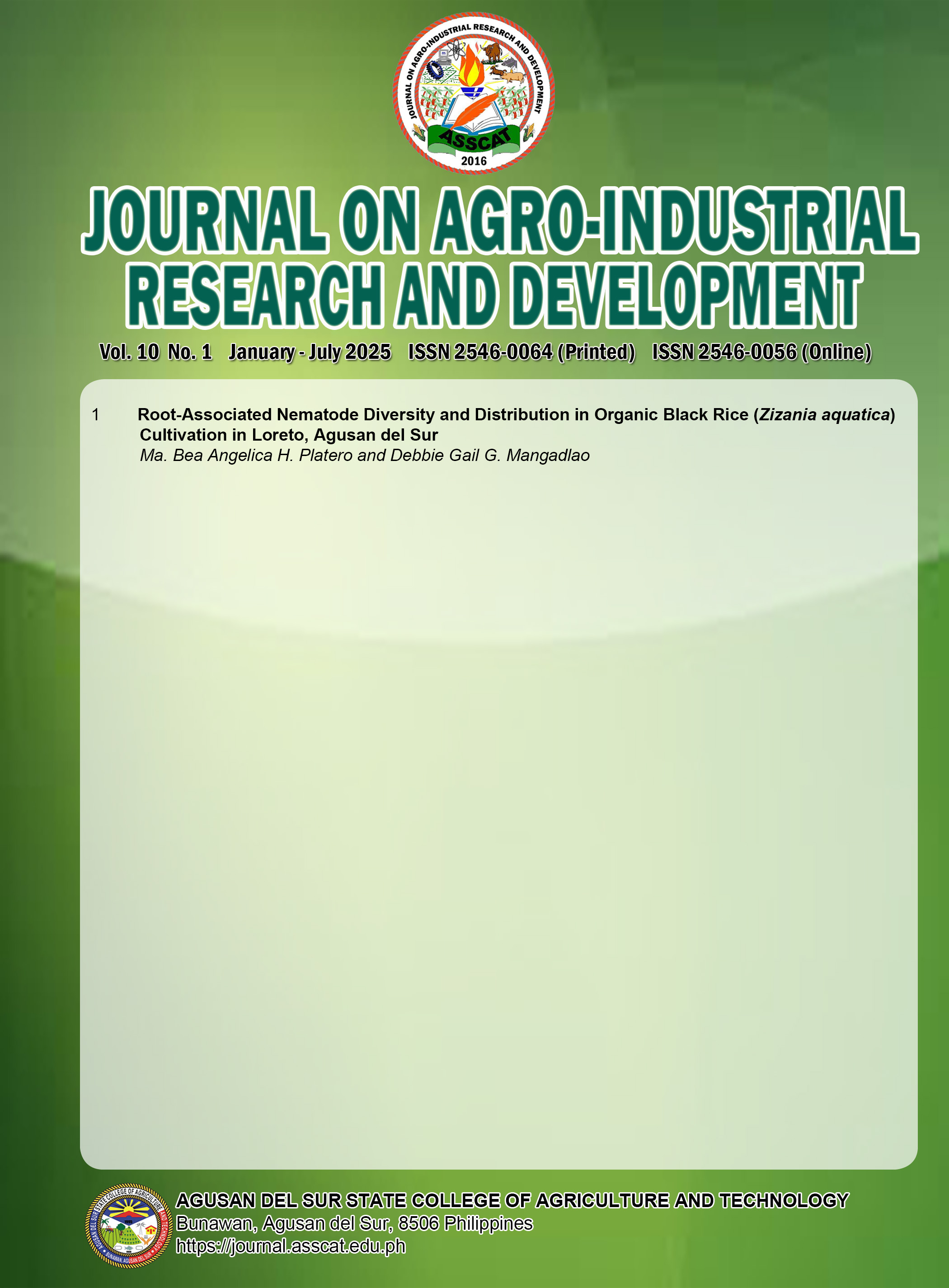Diversity of Odonata in Selected Freshwater Ecosystems of Bunawan, Agusan del Sur, Philippines
Keywords:
Conservation status, Freshwater ecosystem, Freshwater health, Libellulidae, OdonatesAbstract
Dragonflies and damselflies, collectively called Odonates, are important indicators of freshwater health. Studying where they live and how many species are present can help us understand habitat quality and guide conservation efforts. This study assessed the diversity, classification, and conservation status of Odonata in four freshwater sites in Bunawan, Agusan del Sur: Bulong-bulongan Falls, Tagbayangbang Falls, Tagbanaba Creek, and Imelda Watershed. Specimens were collected by hand and with nets, and identified using photographs and expert advice. A total of 16 species from eight families were recorded: Libellulidae (6), Calopterygidae (1), Chlorocyphidae (2), Coenagrionidae (2), Euphaeidae (1), Platycnemididae (2), Platystictidae (1), and Protoneuridae (1). The highest Shannon diversity index (H') was recorded at Imelda Watershed (2.471), followed by Bulong-bulongan Falls (2.065), Tagbayangbang Falls (1.793), and Tagbanaba Creek (1.743). Species richness was highest in Imelda Watershed (14 species) and lowest in Tagbayangbang Falls and Tagbanaba Creek (8 species). The relatively high diversity in these sites suggests favorable environmental conditions, influenced by clean waterways, adequate canopy cover, and the presence of perching substrates such as rocks. Lower diversity areas are affected by anthropogenic disturbances like habitat destruction and pollution. These findings show the that Bunawan’s freshwater ecosystems are important for the survival of Odonates. They support the need to protect Odonates and their habitats through long-term conservation. Future researches should study how environmental factors like anthropogenic activities, water quality and vegetation structure influence their distribution over time.





